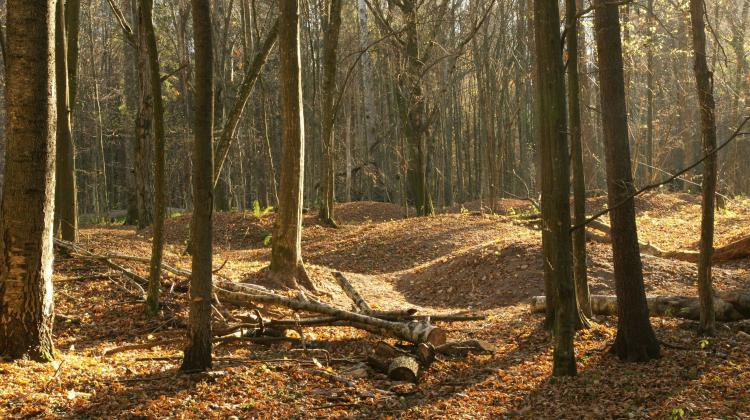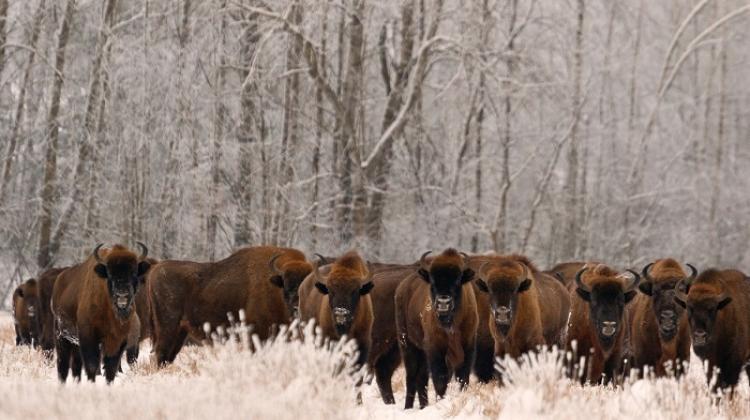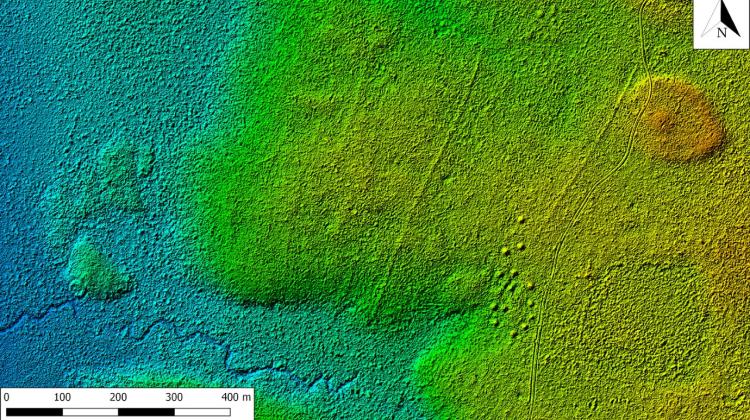Scientists: We need to better protect the Forest; outbreak of bark beetle begins to slow down
 Photo: PAP 2016 / Artur Reszko
Photo: PAP 2016 / Artur Reszko
Białowieża Forest needs better protection - stressed scientists at the meeting with journalists on April 7 in Warsaw. They also informed that the recently observed outbreak of bark beetle in the local national park and nature reserves had already begun to slow down.
The entire Białowieża Forest, with its unique species and biological processes, requires greater protection - scientists postulate, commenting on the decision of the Minister of Environment Jan Szyszko, who approved an increase in the felling of trees in the Białowieża Forest District. Szyszko explains that the objective is saving the Białowieża Forest from threats including bark beetle.
Scientists, however, postulate greater protection of the forest.
"Białowieża Forest should have a permanent (protection - PAP) status, so that it is not treated as a regular commercial forest in accordance with the law on forests" - Prof. Jerzy Gutowski of the Forest Research Institute and the University of Białystok said at the meeting with journalists on 7 April. The meeting was organized by the coalition "I love Bialowieża Forest" (Greenpeace Polska, WWF Polska, Foundation Greenmind Foundation Wild Poland and Client Earth).
Gutowski reminded the estimates, according to which approx. 40 percent of the commercial part of the forest are areas similar to natural.
The professor added that in the legislation (especially in the Nature Conservation Act and the Forest Act) conflicting provisions, "which are mutually exclusive and put forest managers in an ambiguous situation", should be sorted out.
He warned also that cutting and removal of trees attacked by bark beetle causes the destruction of soil, ground cover, shrubs, undergrowth, and mutilation of other trees. The removal of trees destroys rare species, which follow the bark beetle and inhabit dead trees.
According to Prof. Gutowski, maintaining the previously proposed level of timber harvesting throughout the Białowieża Forest (not exceeding 50 thousand m3 per year) would on the one hand protect the biological processes in the best-preserved parts of the forest, on the other - provide the raw material for the local community.
"The entire Białowieża Forest deserves protection, because it is unique in Europe" - confirmed the director of the Mammal Research Institute of the Polish Academy of Sciences, Dr. Rafał Kowalczyk. He added that on the Belarusian side the entire surface of the forest is a national park, and a large part of it is under strict protection. However, the Polish part of the forest is a checkerboard of reserves and commercial forest, and a significant part of it is not protected, "which threatens the loss of the most valuable fragments as a result of forest management".
"I do not say that forest management is wrong" - noted Dr. Kowalczyk. - "But we must remember that the Białowieża Forest is unique, and forest management here should also be conducted on special principles. "He explained that management can be carried out in the most transformed parts of the forest - on the scale that would meet the needs of the local population.
"We can afford it. Białowieża Forest accounts for just 0.7 percent of Polish forests. But this forest shows what forests looked like hundreds of thousands of years ago. It is the last such area" - emphasized Dr. Kowalczyk. He added that this relatively small area of the forest is home to as many as 12 species of predatory mammals (including the largest: wolves and lynx), 5 species of hoofed mammals (including half of Polish bison population), 11 species of bats, insectivorous mammals, 16 species of rodents, many birds and species of fungi and plants.
Currently, fully natural forest occupies 41 percent of the Białowieża Forest area. Only half of this forest is protected in the form of reserves.
The authorities justify the decision to increase logging in the Białowieża Forest with the need to fight the bark beetle outbreak. Meanwhile - as Prof. Jerzy Gutowski said - "we see now, based on the analysis of the existing situation, that the outbreak of bark beetle has began to slow down in the national park and nature reserves".
He added that with regard to commercial forests, the signals were ambivalent. "Some indicators suggest that it should already halt; others say that it may still take some time. It depends on what this year will be like. But next year the outbreak will certainly halt" - said the professor.
Outbreak of bark beetle in the Polish forests occurs from time to time, and it usually continues for 3-4 years and then stops - explained Prof. Gutowski.
Contrary to the opinion of foresters, scientists are of the opinion that the lack of intervention will not jeopardize the forest, and logging will have no impact.
"Outbreak - combated or not - halts exclusively due to natural resistance of the environment. Man is not able to shorten the duration of the outbreak. Even the most ardent supporters of logging admit that" - said Prof. Gutowski.
He also reminded the results of studies from 2011, according to which cutting down trees can at most make woodworm inhabit less spruces. This procedure, however, is effective only if at least 80 percent trees inhabited by the bark beetle are removed, which in the conditions of the Białowieża Forest is not possible (also due to strict protection of its fragments).
The professor believes that the fight against bark beetle has no justification in natural science. "Disappearance of spruce from some habitats in the Białowieża Forest, especially hornbeam, is a phenomenon of a broader, European scale" - he said. Climate change is believed to be one of the causes.
Bark beetle does not threaten the forest - confirmed Dr. Marcin Zych, Faculty of Biology, University of Warsaw. He noted that spruce is not the dominant species in the Białowieża Forest. It is only a natural admixture, and most of the spruce stands (especially those that are not located in humid areas) are trees planted in the last century by man.
"What we want to protect in the Białowieża Forest are lowland deciduous forests. Nothing wrong happens with them. Their conservation status is very good, even great in areas where we do not try to interfere. In the areas where they are subject to activities of foresters - their conservation status is unfortunately worse" - said Dr. Zych.
PAP - Science and Scholarship in Poland
zan/ dym/ mrt/
tr. RL
Przed dodaniem komentarza prosimy o zapoznanie z Regulaminem forum serwisu Nauka w Polsce.

















